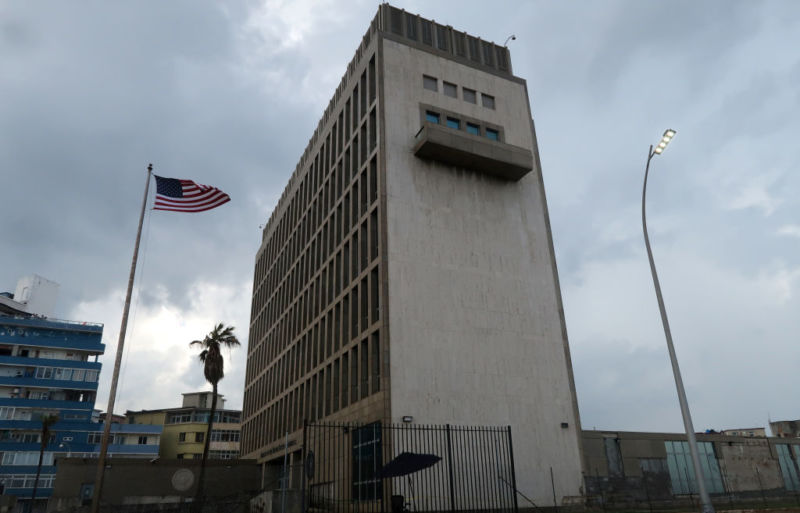US Intelligence thinks Russia may have microwaved US embassies in Cuba, China

Enlarge / The US flag flies outside the US Embassy on October 14, 2017 in Havana, Cuba. US intelligence agencies now suspect Russia is responsible for what appear to have been directed microwave attacks on US embassy personnel in Havana and in China. (credit: Gary Hershorn /GettyImages)
The effects of microwave radiation on humans have long been the focus of weapons research in the US and elsewhere. At some frequencies, microwaves can be used to cause great discomfort-including a burning sensation-without causing long-term effects. But in others, microwaves can penetrate deeper into the body and cause symptoms that include auditory hallucinations induced directly in the brain. Evidence now suggests that strange symptoms experienced by US embassy staff in Havana and China may have been the result of attacks with a microwave-and Russian agents are now the most likely suspects behind the attacks. But skepticism about whether microwaves are to blame remains.
Last March, the Journal of the American Medical Association published details of examinations of 21 of the victims of the mysterious symptoms, finding they had "sustained injury to widespread brain networks without an associated history of head trauma." Earlier this month, the head of the team that conducted the study told The New York Times that microwaves were the most likely cause of the brain injuries. The Times' William Broad reported that a number of experts have now connected the symptoms experienced by the victims with the Frey effect, also known as the microwave auditory effect (MAE)-in which microwaves induce the sensation of sounds (or even speech) inside a person's head.
That effect, first described by American neuroscientist Allan Frey in 1961, has been the focus of repeated research by the Soviet Union, the Russian Federation, and the US. US Navy-funded research in 2003 and 2004 by WaveBand-a company later acquired by Sierra Nevada-looked into the use of MAE as a crowd control weapon called MEDUSA (Mob Excess Deterrent Using Silent Audio):
Read 6 remaining paragraphs | Comments